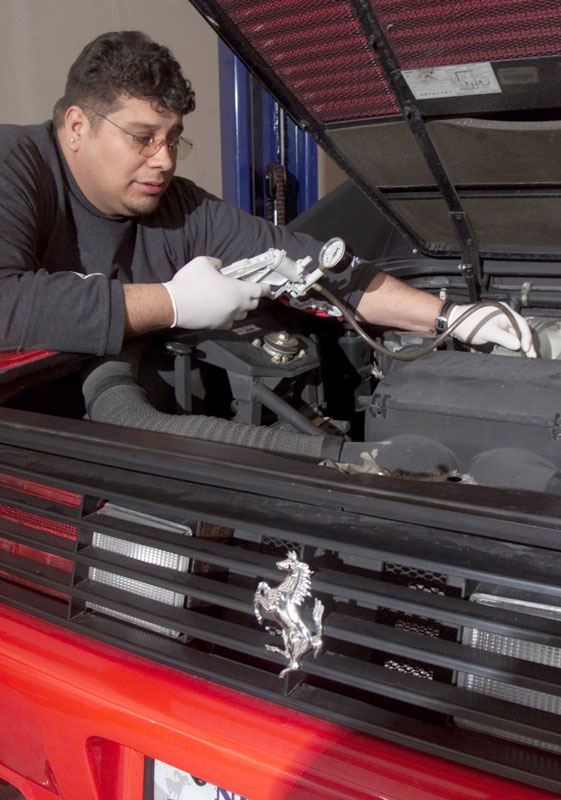
The 16 taxicab companies operating in the Las Vegas area are regulated by the Taxicab Authority and charge the same rates for transportation. Individuals cannot hail taxicabs from the street; hailing a taxicab on Las Vegas Boulevard or Fremont Street is illegal. Therefore, to obtain a cab, individuals must call to request one. All major hotels and restaurants have areas where taxicabs wait to pick up passengers.
The majority of taxicabs do not accept credit cards for payment. Therefore, riders should carry cash or double check with the taxicab company before hailing a cab. To start the taximeter, an initial charge of $3.30 is made. An additional $1.20 is charged for rides originating at McCarran International Airport. Standard fare is $2.20 per mile. If the taxicab is moving less than eight to 12 mph, the taximeter changes from measuring distance to measuring time and assesses 20 cents for every 25.7 seconds. According to the Taxicab Authority, tipping the cab driver is optional.
Approximate minimum fares from McCarran to popular destinations, such as major hotels and hospitals, are listed at the Taxicab Authority's website.
When traveling from McCarran, shuttle services are also available to downtown, strip and off-strip hotels. Prices average $5 or $6 for a one way trip. At least one of the shuttle services is open 24-hours a day. Walk-up limousines and rental cars are also available at the airport. See full list of shuttles.
The Regional Transportation Committee controls the Citizens Area Transit bus system, which consists of 365 vehicles servicing 51 routes. Only 14 routes operate 24 hours each day, with the majority of routes operating between 5 a.m. and 1 a.m., seven days a week. Adults ages 18 and up must pay a $1.25 fare to ride the bus one way. For the Duece, the RTC's double-decker buses, fare is $2 one-way, or $5 for a 24-hour pass. Reduced fares of $0.60 are available for senior citizens ages 62 and up, youths ages 6 to 17 and disabled individuals. However, to receive the reduced rate, individuals must apply for a Reduced Fare Photo ID at either the Downtown Transportation Center or the South Strip Transfer Terminal. Passes are available for consistent bus users and may be purchased at the DTC, SSTT, or various pass vendors located around the Las Vegas Valley.

The RTC's Web site also contains the Regional Trip Planner. Users may enter arrival and departure locations and times, along with preferences such as walking distance or type of bus, to plan out the most convenient bus route. The RTC also issues pamphlets to help commuters figure out the location of the bus system. Full list of passes, vendor locations, and route schedules
The Las Vegas Monorail is a seven-station system that operates on a four-mile elevated guideline. The track runs from the MGM Grand to the Sahara. In December 2006, the Clark County Board of Commissioners approved an agreement to expand the monorail to McCarran International Airport, though no definite plans have been released. Tickets for the monorail begin at $5 for a one-way ticket.
DMV
The most important thing for new Nevada residents to remember, according to DMV Public Information Officer Kevin R. Malone, is to check the official DMV Web site. The Web site lists everything residents must bring for their trip to the DMV. Knowing such information will stop new residents from unnecessarily waiting in line.
According to Malone, the average wait time is currently 42 minutes, down from an average of 60-minute wait last year. However, individual wait times vary dramatically. "If you hit it right, you can be there 15 minutes," he said. "If you hit it wrong, you could be there two hours." While the Web site lists numerous tips for making the trip to the DMV, Malone said what the tips boil down to is "mid-everything." Making the trip during the mid-morning hours, in the middle of the week, on a week in the middle of the month tends to result in the shortest wait time. Avoiding the DMV on days immediately following holidays is also crucial.
Although not an option for people initially moving to Southern Nevada, alternatives to a physical trip to a full-service DMV are available. Approximately 30 percent of registration renewals are now completed online and 15 percent are handled at various self-service DMV kiosks. Locations and lists of online services are available at the DMV website.
People relocating to Nevada have exactly 30 days to obtain a Nevada driver license. If the out-of-state driver license is expired, individuals must obtain a Nevada license immediately.
New residents have 60 days after establishing residency in Nevada to register their vehicles at the DMV. The DMV recommends that individuals obtain their driver license and vehicle registration at the same time. To register an out-of-state vehicle, individuals will need their most recent registration, their out-of-state license plates, a Nevada smog check (if needed) and a Nevada Vehicle Inspection Certificate, or "VIN check," which is done at the DMV office. If ownership of the vehicle is changing, new residents should bring the vehicle's certificate of title. If ownership is not changing, the owner may choose to keep their out-of-state title. Out-of-state insurance is not accepted and individuals must transfer to a Nevada insurance carrier prior to registering any vehicle.
A DMV guide specifically for new residents is available as well.
